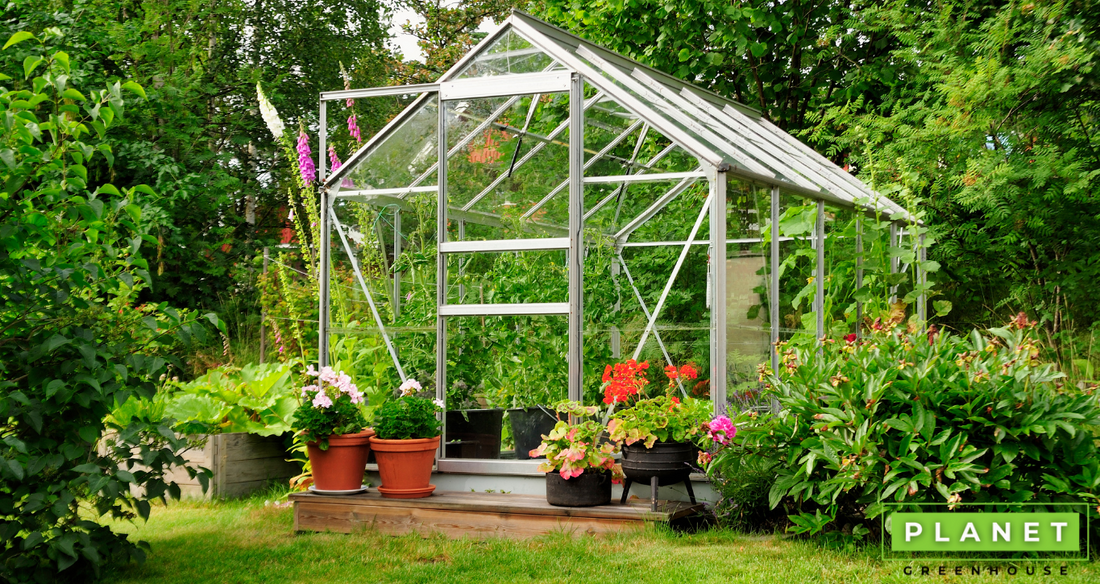Are you trying to decide which greenhouse roofing material is ideal for you? Then, you've got to the correct place! Your selection of roofing material may make or break your farming situation. Therefore, it is critical to get off to a good start!
There is no one best material for covering a greenhouse's roof, and many diverse options exist for doing so. Glass, polyethylene film, polycarbonate sheets, and fiberglass panels are the most often used materials for greenhouse roofs.
There are advantages and disadvantages to each of these materials; some greenhouse designs may be more suited to one than another. However, one crucial feature is shared by all greenhouse roof materials: The material used in a greenhouse must be transparent or translucent so that the plants within can absorb the sunlight and temperature.
Greenhouse Roof Materials
Glass
The use of glass for roofs is not without its limitations. In addition to the price of the glass itself, the expense of the framing materials necessary to support it often accounts for the majority of the total cost. Because of the significant risk of leakage, glass greenhouse roofs require careful construction and sealing. Glass, while not the worst insulator, is more likely to shatter than other materials.
Polyethylene film
Greenhouse plastic film, often polyethylene film, is a low-cost and widely accessible roofing option. Some types of plastic film are nearly as see-through as glass, letting in a great deal of natural light. Some polyethylene films may be durable enough to use for up to five years, and some of these films have been treated with compounds that bounce and reflect heat into the greenhouse, making them even more useful. However, film coverings have several drawbacks, including being less long-lasting than glass or fiberglass, being more vulnerable to breakage, and needing to be replaced more often than any other material. As a result, they probably aren't the best option for greenhouses that will always be in use.
Polycarbonate sheets
Polycarbonate sheets are a popular choice among architects and engineers for greenhouse construction because of their high thermal insulation value. Polycarbonate roofing sheets are superior to other materials in terms of energy efficiency and insulation. In addition, they are more adaptable than glass or fiberglass, lasting up to ten years, and may be utilized in greenhouses with unusual shapes.
However, unlike glass or single-layer fiberglass, the double-layer design does not let in as much light. As a result, the likelihood of yellowing for acrylic is lower than for polycarbonate. Similarly, this material won't hold up as long as glass or plastic.
Fiberglass panels
Fiberglass panels are a cheaper, longer-lasting substitute for glass that can last 15 years or more in permanent greenhouse buildings. It's lighter than glass and doesn't need heavy-duty framing. Over time, this material's light sensitivity will decrease; it needs regular maintenance. In addition, fiberglass greenhouse roofing is less flexible than other varieties.
Greenhouse Roof Cleaning Maintenance
When cleaning the bottom of a greenhouse roof, the first step is to remove the plants and other materials as feasible to lessen the risk of damage and free up more cleaning space. You might need a stepladder and a long-handled, non-abrasive sponge to clean your roof. A cleaning agent is also required.
- One can use white vinegar diluted in water or a commercially available glass cleaner on a glass roof. Depending on the recipe, you may need to adjust the water, oil, or soap you use. Try out a few combinations on a readily accessible section of the roof or walls to see what works best.
- A mix of vinegar and water is advised for cleaning fiberglass panels. Fiberglass, unlike glass or polycarbonate, may need a more vigorous cleaning.
- Polycarbonate panels are best cleaned with water that has been combined with a few drops of mild dish soap.
Leaves and other debris may be swept outside the roof with a non-abrasive brush. Remember to clean out the gutters and the panels while at it. Then, scrub the panels' outside with the sponge and the cleaning agent.
You may scrape the panels or wash them with a water hose to remove any remaining cleaning solution after wiping them down from the inside or the outside. When cleaning, start at the top and work your way down so that dust and grime that gets kicked up from one level doesn't land on a spot you've already scrubbed.
To Sum It Up!
Greenhouse roofs are crucial. Without the proper glass or covering, your plants may struggle to thrive or perish from a lack of light and heat.
When choosing greenhouse materials, roofing should be a primary priority. You can grow vegetables year-round by constructing ideal plant-growing circumstances in your greenhouse.

